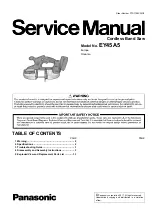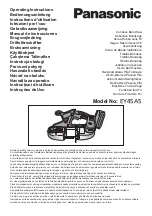
7.3 Saw blades without pin
The machine also accepts plain end blades.
Two adapters with set screws are supplied with the machine
(Fig 10).
Fig 10
Adjust one set screw on each adaptor until it covers
approximately half the hole (Fig 11).
Fig 11
Insert the saw blade and tighten the opposing set screw.
Install the second adaptor.
Note:
The adapters have 4 thread holes. You can position the set
screws for cutting from the front or from the side.
8.0 Blade selection
The following information is general in nature.
A wide array of blades are available for this scroll saw.
Factors to consider when selecting a blade:
‐ Type of material to be cut (hardwood, softwood).
‐ Thickness of workpiece (thicker pieces will require larger
blades).
‐ Features of workpiece (straight cuts, sweeping curves or tight
fretwork).
These factors are important (Fig 12, Fig 13).
Fig 12
Width (W) :
Generally, wider blades are used for making straight cuts and
long curves. Narrow blades are suited for cuts with tight
corners, such as fretwork. When cutting straight lines with a
narrow blade, the blade may have a tendency to drift.
Pitch :
Pitch is measured in “teeth per inch” (TPI) and can be constant
or variable.
A fine pitch (more teeth per inch) will cut slowly but more
smoothly, and minimize vibration.
Try to use a blade that will have a minimum of 3 teeth engaged
in the workpiece at any given time.
Set :
“Set” refers to the manner in which the blade teeth are bent or
positioned.
Bending the teeth creates a kerf (K) that is wider than the back
of the blade (T).
Two common sets are the straight or alternating set (S) and
the raker set (R).
Material :
Blades are manufactured by stamping, milling, or grinding.
Stamped blades are punched out on a press from sheet steel.
Milled blades are made cutting the teeth through a “milling”
process, then heat‐hardening the steel.
Ground blades have high‐carbon steel teeth which tend to hold
their sharpness longer, and provide smooth cuts.
Special styles are also available, such as twist and spiral blades,
which cut from all sides.
Most blades offered are 130mm ( 5 inches) long.
Optimally, a blade (and the operator’s technique) should leave
smooth, clean cuts that do not require sanding.
The user may find a few carefully‐selected styles will serve
most of his or her needs. The selection can be expanded as the
user gains experience.









































